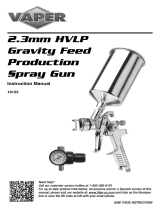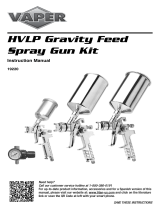
4
SAFETY INFORMATION
RISK OF EYE OR HEAD INJURY
WARNING
WHAT COULD HAPPEN HOW TO PREVENT IT
Eyes and face can come into direct
contact with sprayed materials,
causing serious injury.
Spraying improper materials or
materials not intended for spray
application could result in serious
injury or death.
Certain materials that can be used
with sprayers may cause skin
irritation if they come in direct
contact with skin.
Always use a face mask/respirator
and
protective clothing when spraying.
Always read the label or
Material Safety Data
Sheet (MSDS)
for the
materials and/or
chemicals before spraying to determine if they
pose a risk of cause skin irritation.
Do not spray acids, corrosive materials, toxic
chemicals, fertilizers or pesticides.
Always read the label or Material Safety Data
Sheet (MSDS) for the materials and/or
chemicals before
spraying to ensure they are
safe to use.
Never aim or spray at yourself or anyone else.
Always wear ANSI approved Z87.1 safety
glasses.
Wear a respirator in accordance with
ANSI Z88.2.
Always wear nitrile gloves.
Always wear protective clothing when spraying.
Always spray in a well-ventilated area to
prevent health and fire hazards.
If eyes or face come into direct contact with
sprayed materials, contact your local doctor or
emergency room for immediate help.
This tool is capable of spraying
flammable materials which can result
in fire or explosion.
Never operate sprayer in the vicinity of open
flame or near ignition sources (pilot lights,
cigarettes, portable electric lamps, etc).
Never operate tools near flammable
substances such as gasoline, naphtha,
cleaning solvents, etc.
Work in a clean, well-ventilated area free of
combustible materials.
Never use oxygen, carbon dioxide or other
bottled gasses as a power source for air tools.
Compressed air can be hazardous, propelling
objects or particles that can cause injury into
soft tissues such as eyes and ears.
Never direct air at yourself or anyone else.
Never leave a pressurized tool unattended.
Disconnect tool from air supply when tool is
not in use or when cleaning.
























